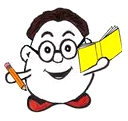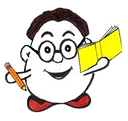1. A literary device that uses past events to give more information about something that is occurring in the present.
a. dialogue
b. style
c. flashback
2. The ____________________ introduces the characters, the setting, and the conflict.
a. climax
b. exposition
c. resolution
3. The _____________________ is the opposition between characters or forces.
a. metaphor
b. simile
c. conflict
4. The __________________ is the highest point of intensity or excitement in a story.
a. climax
b. resolution
c. conclusion
5. The ________________ is the point is which the conflict has been resolved.
a. climax
b. resolution
c. exposition
Identify the following figures of speech.
6. The lawyer is a crafty fox when it comes to finding loopholes in a contract.
a. personification
b. simile
c. metaphor
7. The leaves danced around me in the wind.
a. personification
b. simile
c. metaphor
8. He's faster than a cheetah in hot pursuit of its prey.
a. personification
b. simile
c. metaphor
9. The use of words to express the opposite of the usual meaning is called _____________.
a. irony
b. resolution
c. conflict
10. A word or phrase unlike every day literal language for the purpose of making a comparison or making something more clear or interesting is called ______________.
a. exposition
b. poetry
c. figurative language
11. Which of the following is a traditional tale passed down from earlier times and believed to be true?
a. legend
b. verse
c. short story
12. Hints that are given by an author to prepare the reader for what is to come is called foreshadowing.
a. True
b. False
13. A fictional story that is based on historical events, but the main character is fiction is called ___________.
a. science fiction
b. historical fiction
c. realistic fiction
14. A fictional story that is scientifically based and usually takes place in the future is called ____________.
a. realistic fiction
b. historical fiction
c. science fiction
15. A fictional story using imaginary characters and events that could possibly happen in real life is called ___________.
a. realistic fiction
b. historical fiction
c. science fiction
16. A lesson learned from a story is called a moral.
a. True
b. False
17. A narrative that deals with an element of shock and requires clues to help reveal the truth is called __________.
a. legend
b. mystery
c. style
18. Which of the following is a story or poem that takes place in an imaginary world with characters who are magical or have supernatural abilities?
a. mystery
b. folktale
c. fantasy
19. Which of the following is a literary work that is intended to be humorous or amusing?
a. comedy
b. series
c. simile
20. Which of the following was an English novelist and poet, best remembered for her only novel, Wuthering Heights, which is now considered a classic of English literature?
a. Emily Bronte
b. Emily Dickinson
c. Willa Cather
21. Which of the following was an English crime writer of sixty-six detective novels, fourteen short stories, and plays with stories that have been made for television, radio, video games, and comics?
a. Agatha Christie
b. Edgar Allan Poe
c. Ernest Hemingway
22. Which of the following was an America author, poet, editor, and literary critic of the American Romantic Movement whose stories were known for being grim and melancholy?
a. Charles Dickens
b. Edgar Allan Poe
c. Victor Hugo
23. Which of the following was an English writer and social critic of the Victorian Period and was best known for writing A Tale of Two Cities, Oliver Twist, and A Christmas Carol?
a. Victor Hugo
b. Ernest Hemingway
c. Charles Dickens
24. Which of the following was a French poet, novelist, dramatist of the Romantic Movement of the 18th century and was best known for Les Miserables and The Hunchback of Notre Dame?
a. Agatha Christie
b. Victor Hugo
c. Edgar Allen Poe
Some Helpful Tools
Select the correct answer for each question from the choices given. When you have completed your quiz, check your answers.
Use the Personalized Progress Chart in the Extra Tools section to record your score.
Reading: Fiction Part II - Quiz

